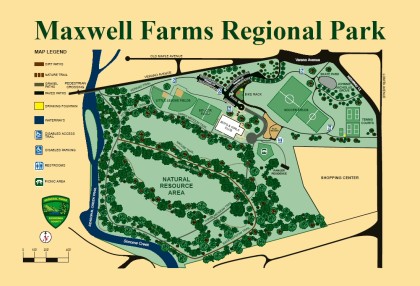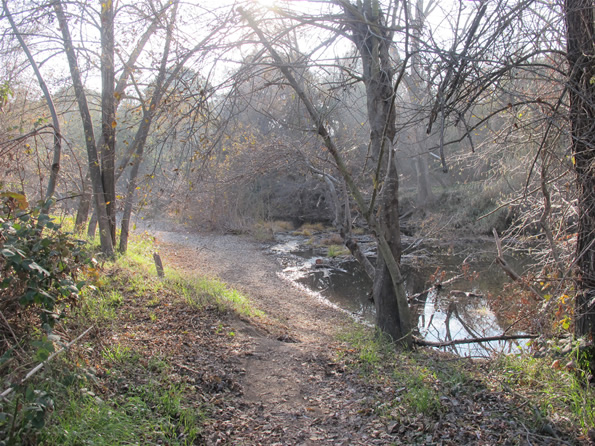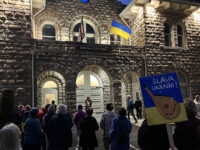 The agreement that protects Maxwell Farms Park from development may be invalid, according to research acquired by The Sun.
The agreement that protects Maxwell Farms Park from development may be invalid, according to research acquired by The Sun.
In a detailed review of Sonoma County documents pertaining to the transfer of the parcel to the County in 1983, it appears that the Park’s conservation easement was never fully recorded by the County and attached to the deed of the publicly-held property, according to Larry Davis, Ph.D.
Historically, the conservation easement was intended to protect the presently undeveloped portion of the park. In its current configuration, the creek, forested areas and meadows remain accessible to the public only by trail. However, if the conservation easement is deemed to be invalid, the use of those areas, comprising more than half of the 80-acre park, may be up for grabs.
This is the latest chapter, Davis said, in a complex and convoluted story of the Park, one that has echoes of controversies stretching back to landowner Ruth Denny’s 1947 conflict with the County over the realignment of Verano Avenue west of Highway 12 and the construction of a new bridge over Sonoma Creek resulting, in her opinion, in the loss of unique natural resources.
The issue of the validity of the conservation easement has particular relevance today, as the Master Plan for Maxwell Farms Park is about to be revised. Additionally, the proposed Sonoma Splash development across Verano Avenue could impact Maxwell Farms Park.
Splash plans call for the elimination of Paul’s Little League field; the League may look to Maxwell Farms Park as the best location for a new ballpark.
Presently, the County of Sonoma believes the undeveloped park space is at minimum governed by the terms of an agreement that secured funds from the federal government for the land purchase in 1983. Under that agreement, the lands are designated for “outdoor recreation” only, but that could include structures such as stadium-style baseball fields with permanent bleachers and related facilities.
A true conservation easement, on the other hand, would limit use of that portion of the park as a nature preserve and disallow such large-scale construction projects.
The spirit of the conservation easement was and will be carried forward, said Steve Ehret of Sonoma County Regional Parks. “How the acquisition was made was normal operating procedure at that time,” he said. There were limitations on the way the parcel could be acquired, he said, but “the federal grant program under the water and land conservation fund added restrictions to the deed covering active and passive areas.”
Asked about what uses could be made of the undeveloped area in question, Ehret did concede that the deed does allow outdoor recreational facilities, but the exact nature of those would be subject to review under the federal guidelines.
Richard Dale, executive director of the Sonoma Ecology Center, expressed surprise at the vulnerability of the park’s conservation easement. “This is news to me,” he said. “As I understand it, County Parks has presented the conservation easement as a demarcation in Maxwell Park planning— clear title or not, that is how we think they are treating it as a planning issue for the park, and they are the land manager in this case.”
Dale’s concerns about the natural features, riparian system, wildlife and habitat of the park are considerable. “Maxwell’s wilder places are a valuable place to experience how water interacts with the land. Here we can see the new grass come up after the first rain, hear Sonoma Creek thundering past in a winter storm, and see the soil crack and the meadows fall silent in the hottest days of late summer. A community facing water shortage, a growing population, and climate change needs to be familiar with these forces, so they can make smart decisions about managing our shared natural resources.”
The County of Sonoma can still record a true conservation easement on the portion of the park in question, effectively preventing development on that land of any kind. Alternatively, the County may decide to simply rely on the limitations of the operative Federal funding agreement, though that will not necessarily prevent major development of the presently “wild” portion of the park, which borders Sonoma Creek.
Davis’ work on the history of Maxwell Park is part of his Ph.D. thesis. He said his research shows the same potential pattern emerging now as did in 1947, what he calls “top-down” County action that could result in the degrading of natural resources, shifts in land use intensions and loss of park integrity.
Davis created the community group Friends of Maxwell Farms Park in order to insure that the public is informed and involved in the park’s future. “The history of the park shows that without such public engagement the County government tends to ‘repurpose’ natural wildlife areas to serve other public and private interests,” he said.
This conservation easement, among other park land use and El Verano neighborhood issues, will be on the table for discussion during a February community meeting sponsored by the County about the park’s Master Plan.
“The present Board of Supervisors should correct the mistake of the earlier Board by immediately placing a new conservation easement on the park and its adjacent creeks,” Davis told The Sun. “Otherwise, the natural amenities of the park will be destroyed by the urbanization of Sonoma Valley.”
Responding to Davis’ findings, First District Supervisor Susan Gorin said, “I am asking questions about the history of the land and the assumptions we have worked under for a number of years on the operation of Maxwell Farms Regional Park. The Master Plan update is scheduled to come back to the public in the near future, and confirming the details of the original donation of the land is important to the planning efforts.”






I live in Livonia Michigan and Sonoma. Livonia has more parks than any city in Michigan. During the 60″s the Federal Government made funds available for cities to buy undeveloped land for recreation. The city bought a lot of land for parks, golf courses and recreation. I am also a Rotarian and our club sponsors a Rotary Park in Livonia. The park land behind Rotary Park and adjacent too it was an open field. Now it is full of baseball diamonds leased to a league. The whole field is now baseball diamonds. So no more open field. It would be a shame for the same thing to happen to Maxwell Farms.
I KNEW this was going to happen! I walk in the Park almost every single day, and have been coming here since we picnicked on the Sonoma Creek banks, over 50 years ago, when there was deep water, even in the summer! RECENTLY, I have observed the first signs of surveying. Please, please folks, DON’T let them touch the Park! Take a look at my Facebook page “Maxwell Farms Regional Park Fan Club”. Protect the future resting place of my ashes!
he County of Sonoma can still record a true conservation easement on the portion of the park in question, effectively preventing development on that land of any kind. <–THIS
If the board of supervisors fail to correct this mistake and place a conservation easement, it will be a failure and great tragedy to our town.